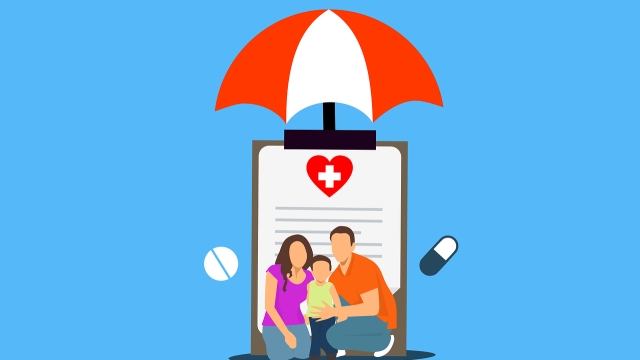Have you ever looked at your doctor’s notes and felt like you were trying to decipher an ancient language? You’re not alone. Doctors have their own unique way of documenting patient information, using a language that seems to be reserved for the medical community alone. But fear not, because in this article, we’re going to delve into the secret world of doctors’ notes and uncover the hidden meaning behind those scribbles and abbreviations.
When you visit your doctor, you might get a glimpse of their notes as they hurriedly jot down information about your symptoms, test results, and treatment plans. These notes serve as a vital tool for doctors, helping them keep track of your medical history and make informed decisions about your care. However, for the untrained eye, this jumble of words and symbols can seem like an impenetrable code.
But rest assured, doctors’ notes, though enigmatic, can be deciphered. Behind the cryptic abbreviations and indecipherable handwriting lies a language shaped by years of medical training and standardized practices. Understanding this language can empower patients to actively participate in their healthcare journey, ask the right questions, and make informed decisions.
So, join us as we uncover the mystery of doctor’s notes and learn how to navigate this hidden language. We will explore common abbreviations, decipher medical terminology, and shed light on the important information hidden within those scribbles. By the end of this article, you’ll be equipped with the tools to decode the secret language of doctors and become an active participant in your own healthcare. Let’s break the code together.
Understanding the Purpose of Doctor’s Notes
Doctor’s notes play a vital role in the healthcare system, serving as a valuable communication tool between healthcare professionals and ensuring continuity of care for patients. These concise and structured records provide a standardized format for documenting crucial information about a patient’s medical history, diagnosis, treatment plan, and progress.
Through doctor’s notes, healthcare providers can effectively communicate with each other and maintain a comprehensive record of a patient’s medical journey. By documenting symptoms, observations, and test results, doctors create a reference point for future consultations and aid in making informed decisions about a patient’s healthcare.
Furthermore, doctor’s notes serve as an essential legal and administrative document. They provide a historical record of a patient’s conditions and treatments, which can be utilized for insurance claims, disability assessments, and research purposes. These notes also facilitate effective communication with insurance providers, ensuring accurate reimbursement and coverage for medical services.
In addition to their practical purposes, doctor’s notes also provide an opportunity for reflection and future planning. By carefully documenting a patient’s condition and response to treatment, doctors can monitor progress and make necessary adjustments to optimize the patient’s care. This reflective aspect of doctor’s notes also enables healthcare professionals to learn from past experiences and improve the quality of care provided.
Overall, doctor’s notes serve as a vital tool in the medical field, facilitating effective communication, ensuring continuity of care, and providing a robust record of a patient’s medical journey. Their structured format and comprehensive documentation play a crucial role in supporting accurate diagnosis, appropriate treatment plans, and ongoing monitoring of a patient’s health.
Common Abbreviations and Terminology in Doctor’s Notes
In the intricate world of medical jargon, doctors have developed a language of their own, filled with abbreviations and terminologies that may seem like hieroglyphics to the untrained eye. When reading a doctor’s note, it can be perplexing and overwhelming to decipher the hidden meanings behind these abbreviations. To shed some light on this mystery, let’s delve into some of the common abbreviations and terminologies you may encounter in doctor’s notes.
-
Dx: This abbreviation stands for "diagnosis" and is frequently used by doctors to indicate a patient’s medical condition or ailment. For example, if you see "COPD (Dx)" in a doctor’s note, it signifies that the patient has been diagnosed with Chronic Obstructive Pulmonary Disease.
-
SOB: No, this doesn’t refer to a distressed doctor! In medical terms, SOB stands for "shortness of breath." If a doctor mentions SOB in their notes, they are indicating that the patient experiences difficulty breathing or feels breathless.
-
NPO: This abbreviation stems from the Latin phrase "nil per os," which translates to "nothing by mouth." When a doctor notes NPO in a patient’s report, it indicates that the patient is not allowed to consume any food or drink for a period of time due to medical reasons, often in preparation for a surgical procedure.
Understanding these common abbreviations and terminologies used in doctor’s notes can help patients gain clarity about their medical conditions and the care they receive. However, it’s essential to remember that these abbreviations should only be interpreted in the context of the entire note and in consultation with the medical professionals involved.
Stay tuned for the final section of our article, where we will explore the impact of Electronic Health Records (EHR) on doctor’s notes and their potential implications for patient care.
Challenges and Limitations of Interpreting Doctor’s Notes
The deciphering of doctor’s notes poses several challenges and limitations. The handwriting used by doctors can often be difficult to interpret, leading to misunderstandings and potential errors in patient care. Moreover, abbreviations and medical jargon commonly employed in these notes can be perplexing for individuals outside the medical profession.
Another challenge is the lack of standardization in doctor’s note formats. Each physician may have their own unique style and template for documenting patient information, making it challenging to decipher and compare notes from different doctors. This can hinder the efficiency and accuracy of medical record keeping and communication among healthcare providers.
Furthermore, the brevity of doctor’s notes can also be a limitation. Due to time constraints and the need to document a large volume of patient information, doctors often rely on concise and abbreviated language in their notes. As a result, important details may be omitted or difficult to comprehend without additional context.
In conclusion, the challenges and limitations associated with interpreting doctor’s notes stem from issues such as illegible handwriting, medical jargon, lack of standardization, and the brevity of the notes themselves. Efforts to improve clarity, standardization, and accessibility of these notes will be crucial in enhancing communication and ensuring the accuracy of patient care.



